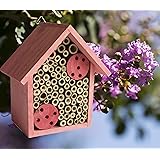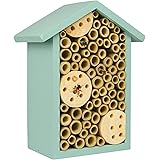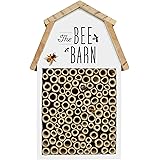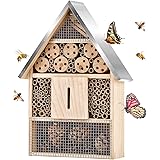Ladybugs are the little buggers that can wreak havoc on your vegetable garden by devouring aphids, mites and other harmful bugs. They are easy to recognize by the 13 spots adorning their elytra (wing covers) and their black head with yellow markings. In fact, their insatiable appetite for aphids and other pests has made them one of the most valued predators in the plant world. But what if you come across a ladybug with no spots? Is it still a ladybug or is it an imposter? Here are a few tips to help you tell the difference.
While the number of spots on a ladybug’s wing covers doesn’t say anything about its future, the color does communicate to predators that it may taste bad or be poisonous, according to National Geographic(Opens in a new window). In addition to their colorful warning, most species of ladybug have the ability to secrete a foul-smelling liquid from their joints and can play dead when threatened.
If you come across a ladybug with no black spots on its elytra, it is likely an Asian lady beetle. These bugs were introduced to the United States from Asia over a hundred years ago to control aphids on pecan trees and are now the most abundant ladybug species in the country. Asian lady beetles are also known to bite if they feel cornered.
Identifying an Asian lady beetle isn’t easy, since they can vary in color, but they all have a prominent mark on the section of their pronotum (the protective “hood” behind the head) that sits against their wings. This mark looks like a black arch that forms a W or an M, depending on the angle from which you view the insect’s head.
Another defining physical characteristic of an Asian lady beetle is that its wings don’t have any black dots or marks, but they do have a distinct M-shaped mark on their base. Lastly, this beetle’s wing cover edges are rounded when viewed from the front and dome-shaped when viewed from the side.
There is also a native, 9-spot ladybug in the United States, but it isn’t found very often and was close to extinction until it was rediscovered by 10- and 11-year-old brothers and sisters in Virginia in 2006. This discovery led to the creation of a Ladybug Project at Cornell University(Opens in a new window) that the public can participate in to help restore this species. While the multicolored Asian ladybugs have overtaken the native population in some areas, the original 9-spot is making a comeback thanks to the efforts of dedicated gardeners and naturalists. The good news is that both of these species are beneficial to your garden. So if you see more of them this year, don’t worry, you aren’t being haunted by alien invaders! Instead, welcome them as a sign that you’re doing your part to keep your vegetable garden healthy and free from pests. Happy gardening!









